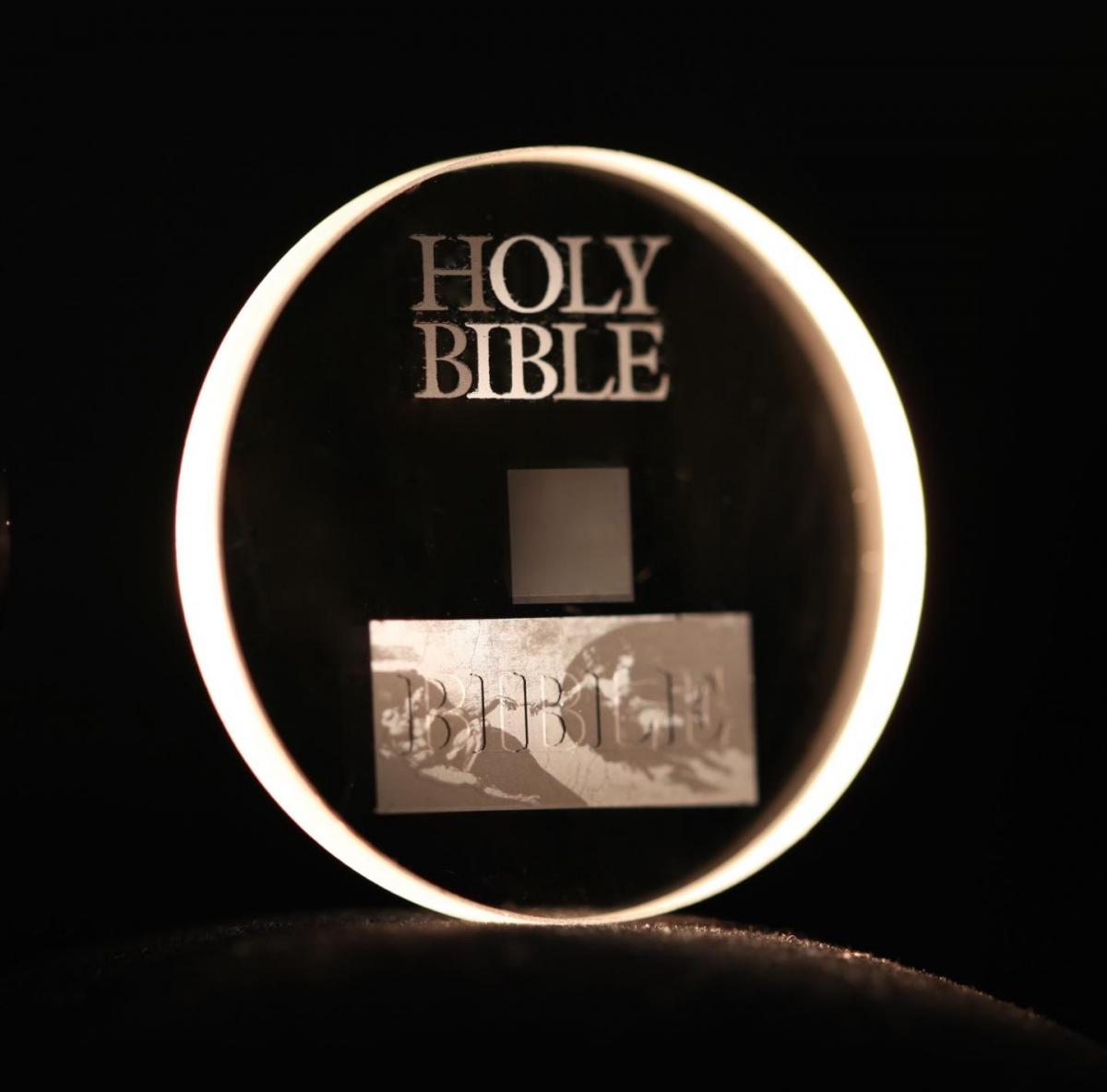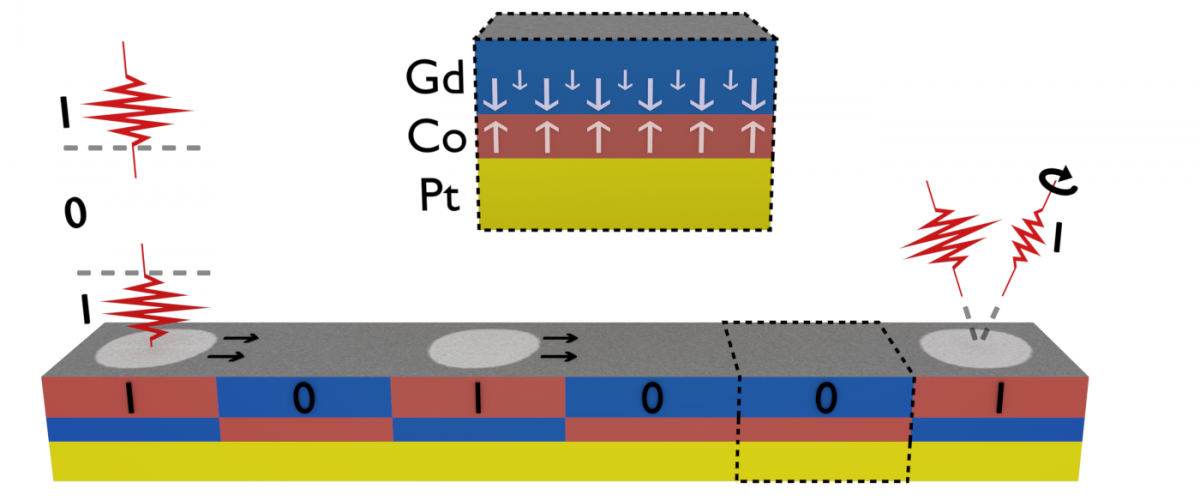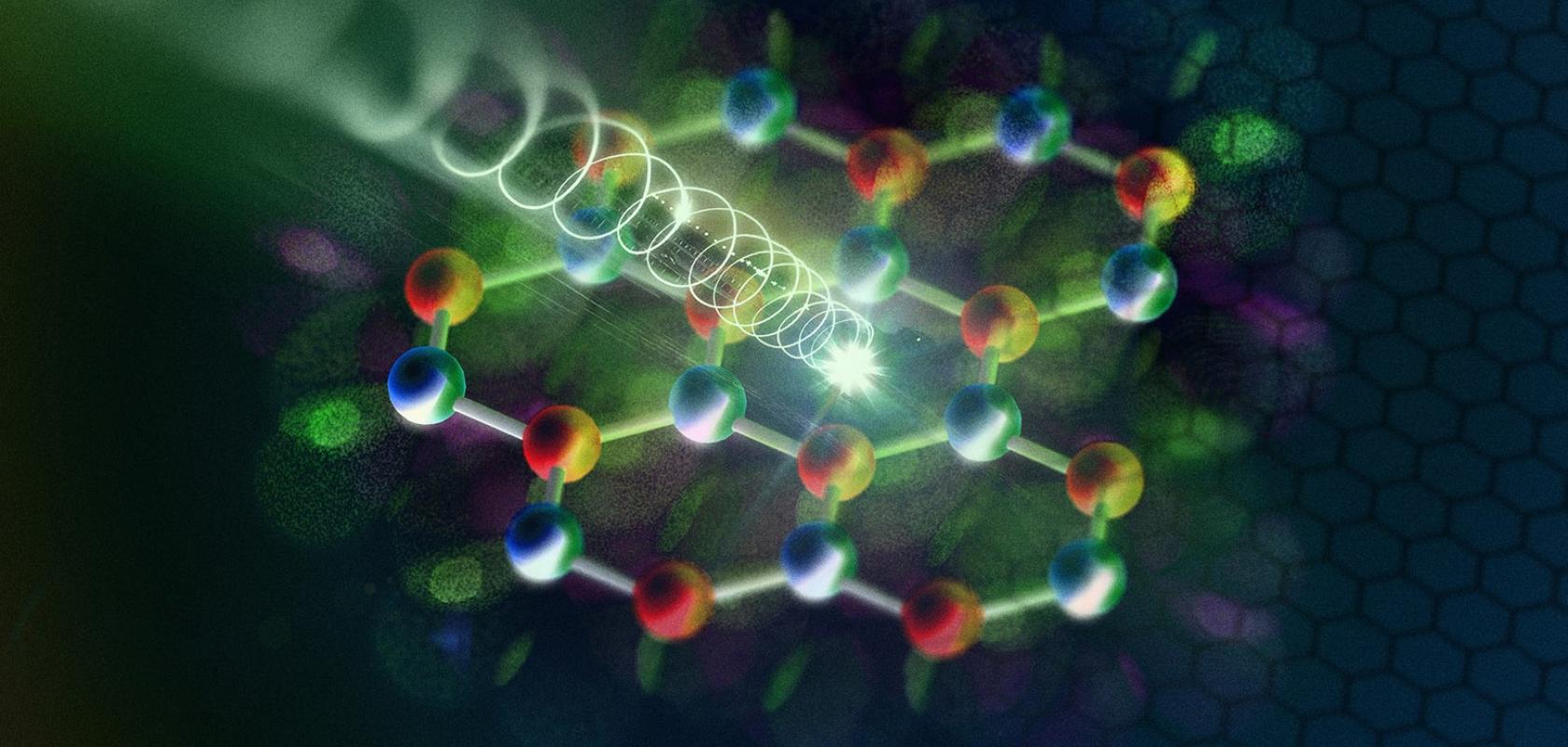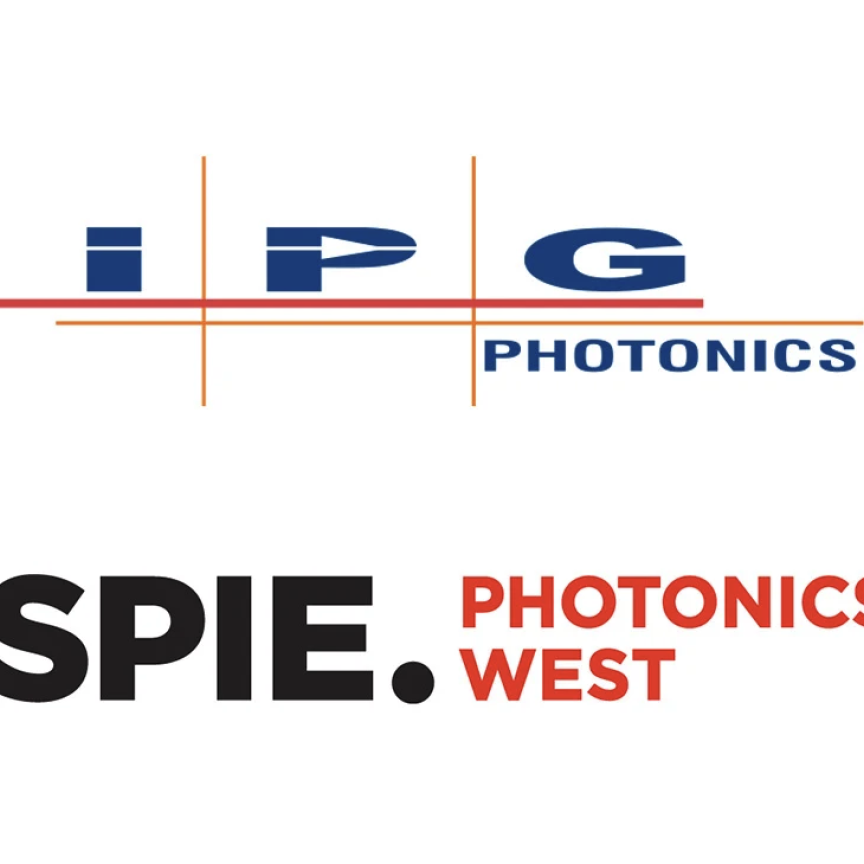For years, computing has been about raw speed, putting smartphones in our pockets many times more powerful than the computers that put a man on the moon. That’s thanks to a colossal silicon chip industry that completely dominates the processor and random access memory sectors. But silicon fabrication is getting increasingly complex – and that opens an opportunity for other materials, where information is manipulated using ultrafast lasers.
For example, in enabling computers to process arithmetic and logic, ultrafast lasers can help accelerate electrons moving in two dimensional materials comprising just a single layer of atoms. Rupert Huber, from the University of Regensburg in Germany, and Mackillo Kira, from the University of Michigan, United States, use monolayers of transition metal dichalcogenides to exploit ‘valleytronics’. The valleys in question are two different momentum states that electrons can be in, that give the electrons equivalent but different properties. In these valleys, electrons can be selectively excited by circularly polarised light. ‘The information of which valley a photoexcited electron resides in can be described by a spin-like quantity, the valley pseudospin,’ Huber explained.
Huber’s team therefore uses the oscillating carrier wave of an intense terahertz (THz)-frequency light pulse to accelerate electron movements through a semiconductor. ‘We can accelerate electrons from one valley into the opposite, and thereby switch the valley pseudospin in a few femtoseconds before they undergo scattering,’ he explained. That’s a mind-boggling speed, given that a femtosecond is a quadrillionth of a second.
The valley pseudospin states could become binary digits in a ‘lightwave’ computer, performing logic operations ‘a million times faster than conventional computers bound to the gigahertz range’, Huber said. But they can also be put into superposition ‘fast enough to work in a quantum processor’ he added. This could work at room temperature, whereas existing quantum computing-based superconducting circuits must be cooled to extremely low temperatures.
However, attaining that speed brings fundamental challenges. Lightwave-accelerated electrons scatter in less than 10fs, explained Huber. ‘Thus, to realise valleytronic-based logic, one has to accelerate electrons faster than this from one valley to another, which requires field strengths in excess of 10 million volts per centimetre.’ His team starts with a Legend Elite Duo titanium-sapphire amplifier from Coherent. It produces 30fs laser pulse energies of up to 5.5mJ, with stability that Huber said ‘helped us to reach quite ambitious goals’.
![]()
An illustration showing the 'up' and 'down' pseudospin states, a light pulse and the hilly energy landscape experienced by the electrons. Credit: Stefan Schlauderer, University of Regensburg
That’s important, because accelerating electrons effectively is susceptible to variations in incoming pulse power and duration, Huber said. ‘We use the laser output to pump a dual-stage optical parametric amplifier (OPA) system, providing two spectrally-detuned near-infrared pulses with adjustable centre wavelength,’ he explained. ‘With pulse energies as high as 30µJ, THz electric field strengths of up to 100MV per centimetre are accessible, which enable an ultrafast intervalley transport within 3fs.’
This is just one example of how ‘scientists are exploring subtle effects in solid state and surface physics,’ noted Marco Arrigoni, director of marketing at Coherent. Most research is targeting experiments ‘close to today’s limits in terms of time, spatial resolution, electric field strength and similar parameters’, he added. ‘Light, in the form of femtosecond and attosecond coherent pulses, provides the best means to drive and interrogate uniquely fast processes, such as coherently excited and superpositioned electronic states.’
Coherent has supplied its Legend Duo series to several labs that require short pulse widths. The series provides pulses down to 25fs, a duration that maximises time resolution. ‘For example, coherence in excitons generated in some semiconductors might be destroyed by scattering in tens of femtoseconds or less,’ said Arrigoni. ‘Typically, two pulses are used, where varying the pulse delay gives time resolution of a few femtoseconds. The pulses can be visible, infrared or THz, or even a supercontinuum. The pulses may be combined at the sample, often called pump-probe, or the detector, often called gating, depending on the effect being studied.’
Sought-after stability
High beam quality and high pulse energy is required, because such experiments typically involve driving more than one non-linear effect, Arrigoni added. ‘With femtosecond systems, a regenerative amplifier acts like a cavity and tends to give the best beam quality,’ he said. ‘Conversely, a multipass amplifier can give more power.’ This can be achieved by amplifying the Vitara laser oscillator in a regenerative amplifier and following with a single pass final stage. ‘This delivers up to 16W of average power at a 5kHz repetition rate,’ said Arrigoni.
Another Legend Duo feature useful for advanced computing research applications is its stable pulse control, including the option of fully integrated carrier envelope phase (CEP) control. ‘Stability is important to reach requisite signal-to-noise in some of these studies,’ Arrigoni said. ‘Moreover, non-linear effects, such as high harmonic/attosecond pulse generation and frequency mixing are extremely sensitive to any changes in the beam shape, pulse energy, beam pointing and CEP offset.’
Pulse-to-pulse stability in energy and duration is also critical for scientists at the University of Southampton’s Optoelectronics Research Centre (ORC), who are investigating a new computer memory technology. Peter Kazansky’s team is working on high-density memory based on forming nanogratings in glass with a potential lifespan of 13 billion years at room temperature. The team therefore refers to the technology as ‘eternal 5D data storage’, where 5D refers to the five parameters with which they encode the data. Three parameters are the conventional physical dimensions, referring to the voxel location in the many layers of nanogratings formed in the glass where information is stored. ‘The nanogratings are produced in the focus of an ultrafast light beam and are oriented perpendicular to the polarisation of the beam,’ Kazansky said.

University of Southampton researchers have used ultrafast lasers to record the King James Bible into 5D optical data storage. Credit: University of Southampton
The remaining two parameters are a voxel’s birefringence, related to the difference in refractive index for light polarised parallel and perpendicular to the nanogratings. The nanogratings create a slow and a fast axis in the material. Light that is polarised parallel to the fast axis travels faster through the material than light that is polarised parallel to the slow axis. This leads to a differential phase shift between the polarisation components of transmitted light, called retardance.
The two extra parameters that the team uses are the angle of the slow axis, and the strength of retardance. These parameters relate to the length and orientation of the nanograting, respectively, and can be controlled using the polarisation and intensity of an ultrafast laser beam. The ability to control the retardance and orientation of a nanograting ‘gives us extra degrees of freedom, in terms of putting in more bits into a given voxel,’ said ORC’s Morten Ibsen.
Currently, the technology provides roughly the same storage density as magnetic disk memory, Ibsen said. However, the Southampton researchers believe this capacity can increase significantly from its current level by fine-tuning the inscription process. That has interested many groups wanting long-term, dense data storage, like the Vatican Library, and the US Library of Congress, Ibsen explained. The team is also partnering with Microsoft to replace tape memory storage in data centres.
Achieving that memory boost relies on pulse-to-pulse stability of the ultrafast lasers. Consistent pulse duration is important, because the pulses last just a few hundred femtoseconds, Ibsen explained, as is consistent energy output. ‘The systems that we use have something like half a per cent energy variation between successive pulses,’ Ibsen said. ‘That is a very good number but it puts a limitation on precisely how well we can define the value of a specific birefringence.’
That system comes from Lithuania-based Light Conversion, whose Pharos laser the team at ORC has been using for 10 years, according to head of sales, Martynas Barkauskas. ‘It is true that our lasers do have very flexible parameters and are therefore attractive for researchers,’ he noted. ‘But, first of all, they were developed for – and are mostly used for – industrial applications that require superior long-term performance, which is also very instrumental when one needs to reliably write large amounts of data into glass voxels,’ he said.
Can ultrafast lasers be cost competitive?
Beyond high pulse-to-pulse stability, the Pharos’ pulse durations are the shortest available for its class, and are tuneable, Barkauskas noted. The Pharos laser also offers flexibility in repetition rates, including burst modes and reasonably short pulse durations, on the order of 100-300fs. For very short pulses of 20-50fs, like those used by Huber’s team, Light Conversion can also supply wavelength tuneable optical parametric amplifiers (OPA) or noncollinear-OPA (NOPA) products.
Barkauskas is optimistic that ‘femtosecond lasers could make a commercially viable solution for large data centres.’ Light Conversion’s lasers have been used for 10 years in three-shift manufacturing, of various parts like chips, medical devices and consumer electronic goods. ‘Thus, I do think that it could make a feasible commercial case for large data storage or libraries. But, of course, there are many questions to be answered before this becomes a reality.’
Ibsen, meanwhile, noted that cost will be a significant factor. ‘Ultimately, we want to make the process cheaper and cheaper, in order to hit the truly mass market,’ he said.
A team at the Eindhoven University of Technology, in the Netherlands, led by Bert Koopmans, is using a Spirit femtosecond laser and Nopa, from California-headquartered Spectra-Physics, in developing new memory technology. In this instance, bits of information are recorded in the magnetisation of atoms in ferrimagnetic alloys that contain cobalt and gadolinium. These atoms’ magnetisation is oriented in opposite directions, Koopmans explained. A single femtosecond laser pulse is enough to heat up the materials to their Curie temperature, where their magnetic properties change. ‘There is a kind of spin-flip process going on between the cobalt and the gadolinium,’ Koopmans said. ‘The magnetisation ends up in the other orientation from what it started with. Each laser pulse, in a deterministic way, toggles the content of the bit.’

On-the-fly data writing in racetrack memory devices. The magnetic bits (1s and 0s) are written by laser pulses (red pulses, left side), and data is transported along the racetrack towards the other side (black arrows). In the future, data might be also read-out optically (red pulses, right side). Credit: Eindhoven University of Technology
The Eindhoven researchers have developed synthetic ferrimagnetic systems in which toggle switching is more robust, with a stack containing platinum, cobalt and gadolinium. In such a system, entirely optical computing might be possible, with femtosecond laser pulses potentially providing ultrafast memory function on an integrated photonic chip. ‘The ultimate idea would be to have optical data signals propagating through a photonic waveguide and have that crossed with a magnetic strip, which functions as a racetrack memory,’ Koopmans explained.
This requires femtosecond lasers, because the heating needs to be precisely localised in a very small location. ‘Once the switching has nucleated, you want to go back to room temperature as quickly as possible,’ Koopmans said. ‘You need to be in this regime where the electronic temperature is higher than the lattice temperature. That typically sets the timescale of a few hundred femtoseconds.’
The aim is that bits will be 50 square nanometres, requiring just 50fJ pulses. However, currently, the domains being heated are larger and the femtosecond pulses are in the nanojoule range. Koopmans is keen to reduce the power level, as ‘the ultimate idea would be to do the same tricks at ultralow power just using communication signals on-chip’, otherwise, ‘our application fails’. But Koopmans also wants to study whether longer picosecond pulses would work, as that would be more compatible with photonic integrated chips. And, echoing Ibsen’s hopes for Southampton’s 5D memory, it would also reduce the expense that femtosecond lasers currently bring.
While these applications are far from commonplace, their diversity shows the computing opportunities that ultrafast lasers can open up. Huber, for example, noted that lightwave electronics ‘has attracted a rapidly growing number of research groups worldwide’.
He said: ‘It is amazing to see how many different aspects of the quantum dynamics of electrons suddenly become so clearly visible when you systematically study solids faster than a cycle of light. Moreover, the field has developed first realistic perspectives for actual devices. I believe developing the first functional lightwave devices and circuits will be a competitive part of our research field. Any sustainable interest by the industry could dramatically boost this development.’


